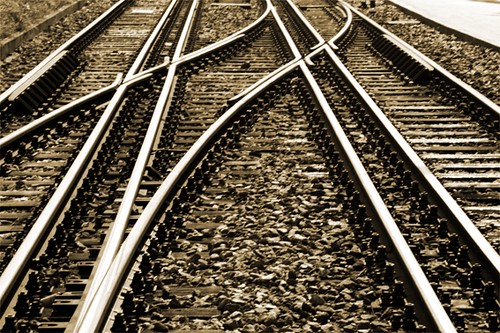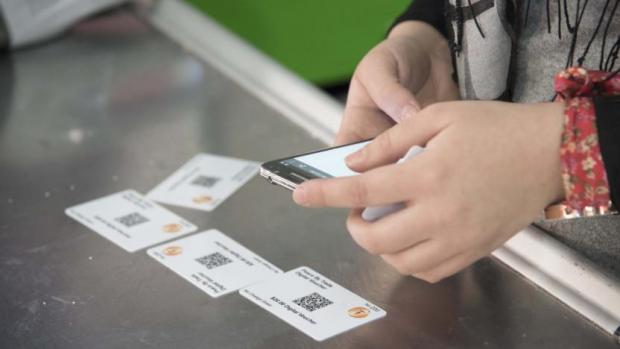Although blockchain technology first appeared in the financial world, as the backbone of digital currencies like Bitcoin, the decentralised nature of the technology means it can also be used to transform the public sector in many areas, particularly when it comes to all kinds of administrative stuff. Currently, a large number of processes are carried out in order to build trust between the various parties through intermediary institutions. A (good) blockchain solution could eliminate the need for that, as the blockchain itself creates trust through technology: by verifying identities, tracking objects or assets and certifying transactions.
The blockchain can also enable consumers to make more informed purchasing decisions by enabling the secure tracking of goods and bringing transparency to supply chains. Consumers are becoming increasingly interested in whether the products they buy have been fairly and sustainably produced – along the entire supply chain. However, certifying the different parts of supply chains remains very time- and cost-intensive. The blockchain, however, makes it possible to streamline the process and at the same time provide traceable and transparent documentation: every single step of production, certification and processing is recorded and stored in the blockchain. Nobody can go back and change or manipulate that information retrospectively.
The company Provenance already supplies its blockchain-based supply chain tracking service to 200 retailers and producers in the food and drinks industry, while there’s another company tracking the journey of sustainable coffee beans. And it’s not just the food industry that can benefit from the technology: electronics can too, with increased traceability allowing companies to prove that they do not use so-called conflict minerals, but instead only ethically-sourced materials for the production of smartphones, tablets and co.
Tracking Donations From Donor to Recipient
Blockchain also has the ability to make it easier to track transactions, meaning it could be of benefit to aid organisations too. Especially when it comes to donations and aid, it’s extremely valuable to be able to see exactly where funds or goods ends up. Money transfers are particularly susceptible to being lost, with a suspected 30 per cent of all aid going missing due to corruption. And conventional methods don’t make it easy to verify what actually reaches whom in the end – or not.
People who donate to charitable organisations have to feel sure that their money is going to end up where they want it to. This is where DLTs can help. There are already a few initiatives and projects that are working to make it possible to trace donations all the way to their intended recipients.
One of those is GiveTrack, a donation portal developed by the US non-profit organization BitGive. The organisation wants to make every single donation traceable, from the donor right through to the end user or project, rather than just having general information about the broader areas where donations end up. This could help charitable organisations carry out their projects more quickly and transparently. The Irish company Aid:Tech is currently working on a similar solution.
Putting an End to Land Grabbing and Corruption?
Blockchain could also be used to help streamline data management and avoid data silos. It could also prove to be an effective tool against corruption as it provides a high level of security for the information and integrity of managed records and ensures their authenticity – making it difficult, or near on impossible, to falsify information.
Due to the characteristics of the technology, the use of the blockchain is particularly suitable for registering personal assets – in particular land registry entries. In places where there are issues around landgrabbing, land disputes or unfair distribution of land titles, secure databases could help combat fraud while encouraging people in poor communities to officially register their land. Such blockchain registers have been tested in Sweden, Georgia, Colombia, Ukraine, Kenya, Ghana and other countries – where some have been successful and others have failed. It is becoming apparent that, more than anything, blockchain can be implemented to strengthen existing systems of registration. A prerequisite for the success of blockchain-based registers is therefore that the existing systems are already strong and legitimate – simply adding blockchain to a system where the structure is lacking or corruption prevails is very likely doomed to failure.
What’s Behind the Hype?
Blockchains and DLTs could streamline bureaucracies, reduce administrative effort and make processes more efficient. By eliminating the possibility of manipulation, the technology has the potential to prevent corruption in money transfers or property registration and bring transparency to supply chains and markets. All these areas, however, require regulations and, above all, strong actors or institutions that adhere to certain rules in order to achieve the desired reliability and traceability of data.
As is true with any technology – blockchain is merely a tool that can be used to help solve a problem, but not a solution to a problem per se. Using blockchain to try and “uncorrupt” a corrupt system probably wouldn’t be all that effective – but it could be used to secure reliability and traceability within a system that’s free of corruption and help it to stay that way.
Blockchain and other distributed ledger technologies also have the potential to trigger lasting changes in other areas, for example in the sharing economy or when it comes to supplying the disadvantaged with digital identities.
To read all the interviews, case studies and background articles in RESET’s Blockchain Special click here.








